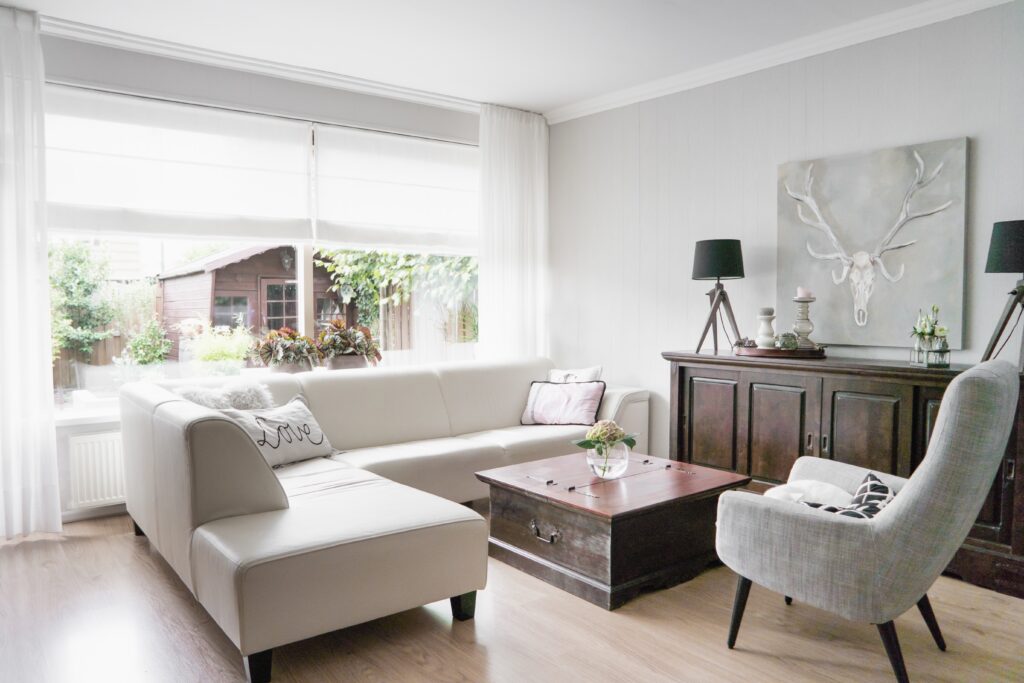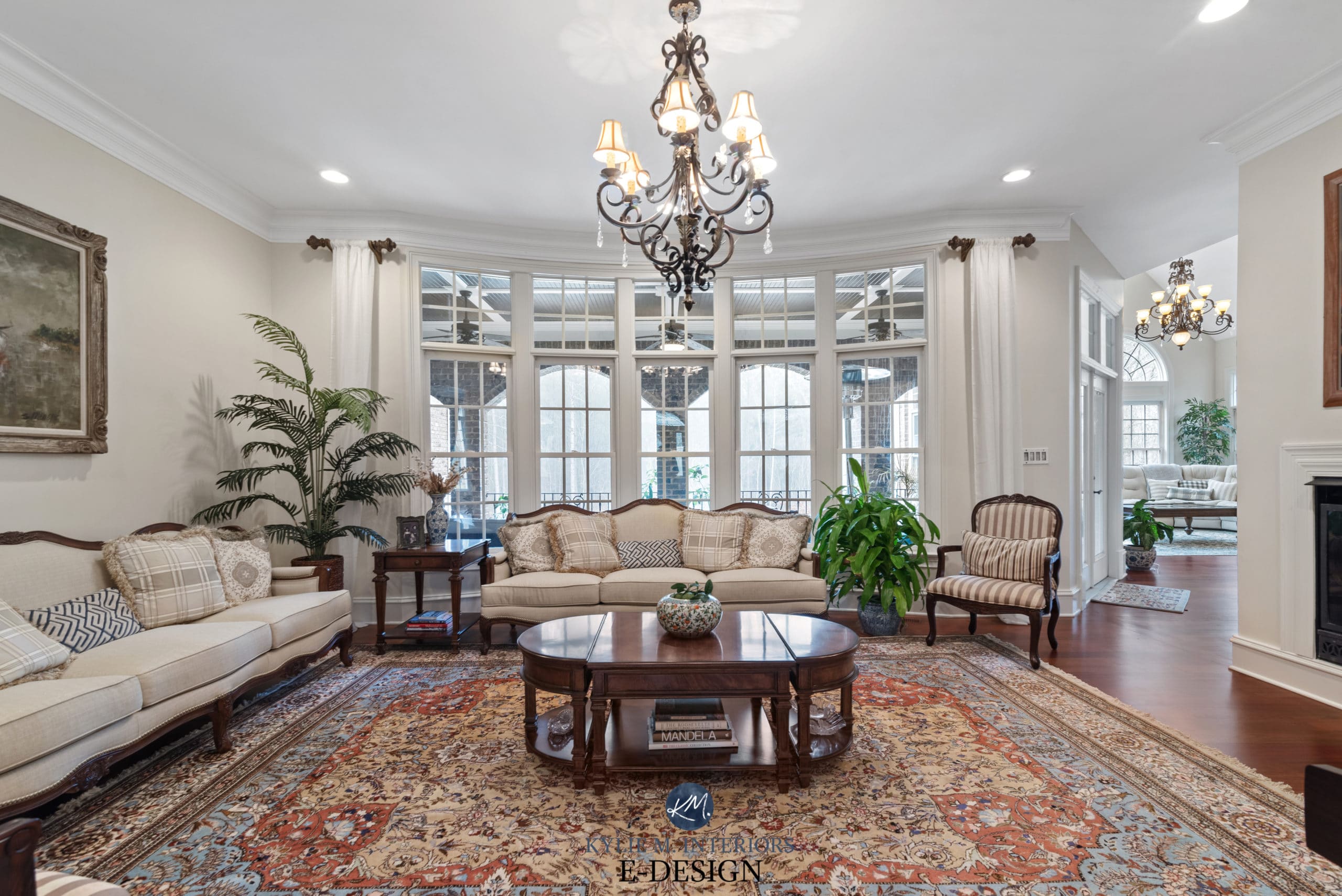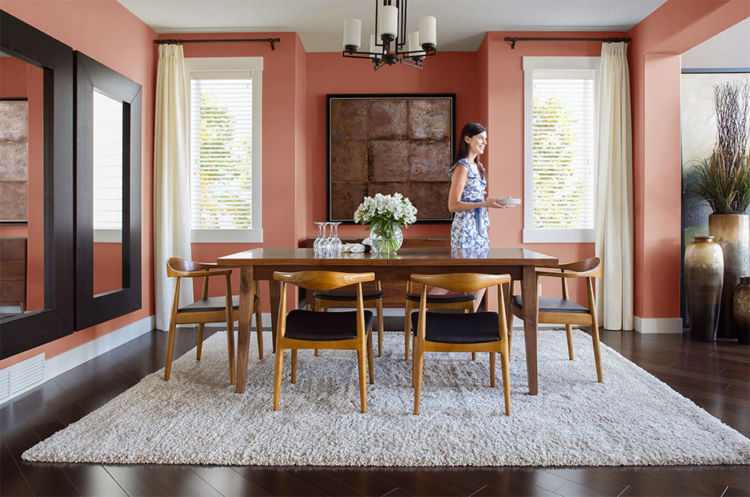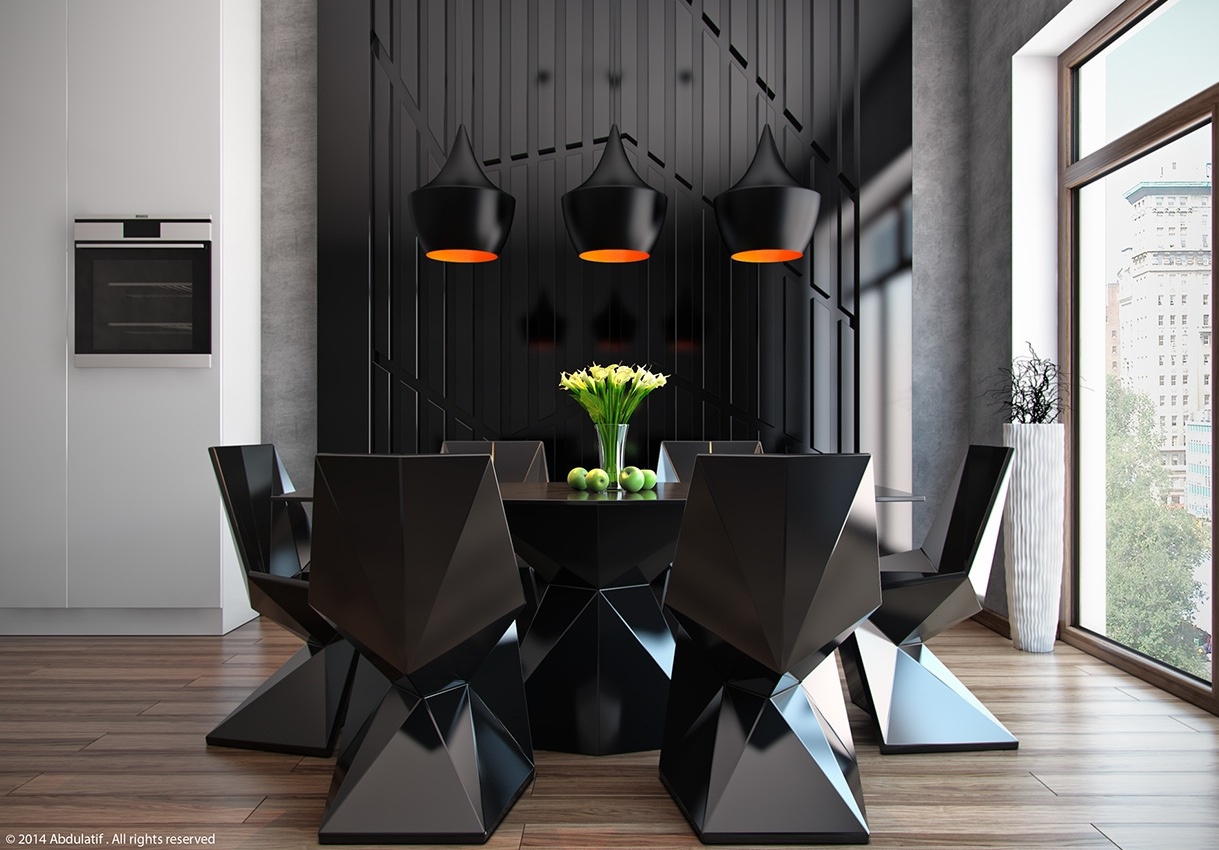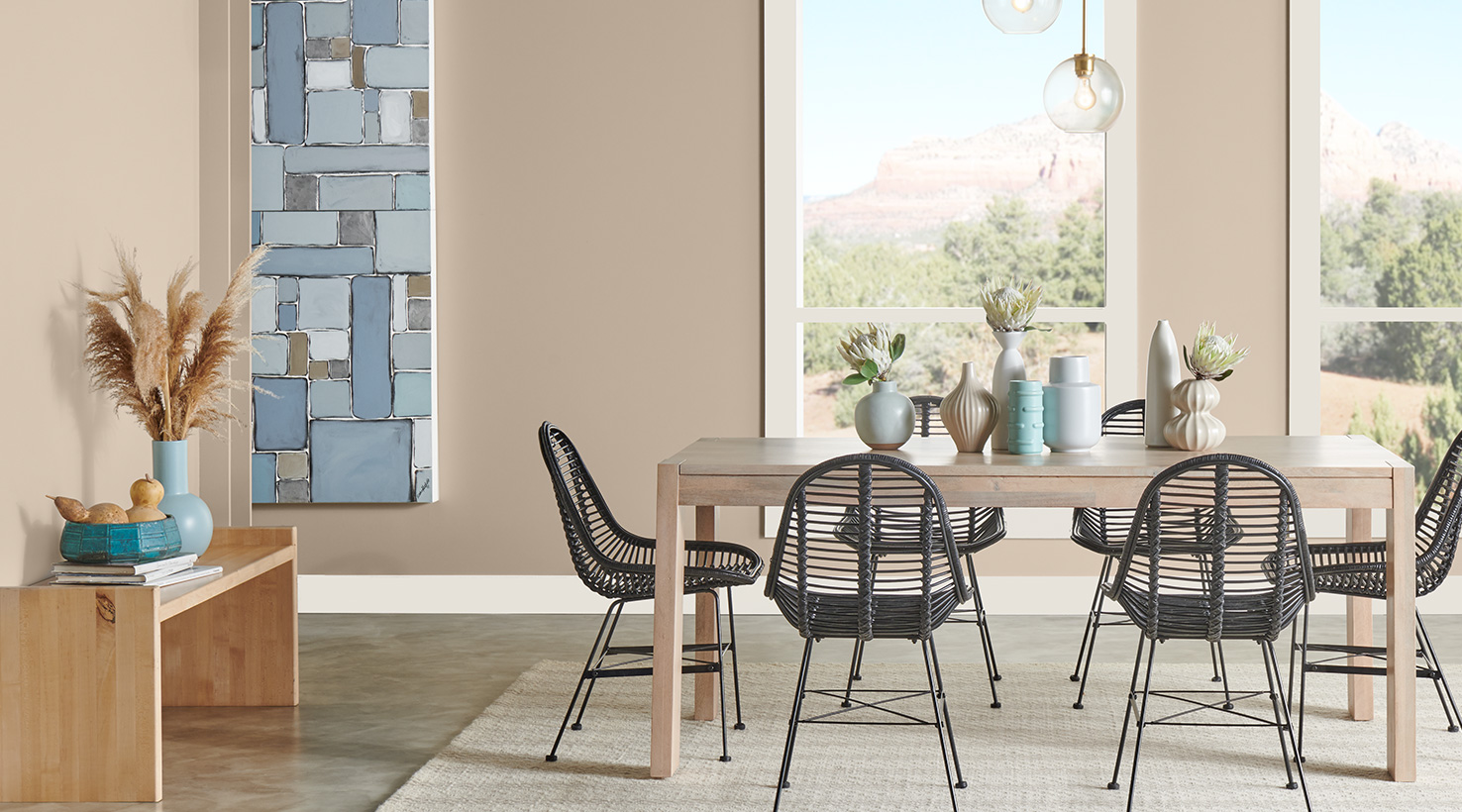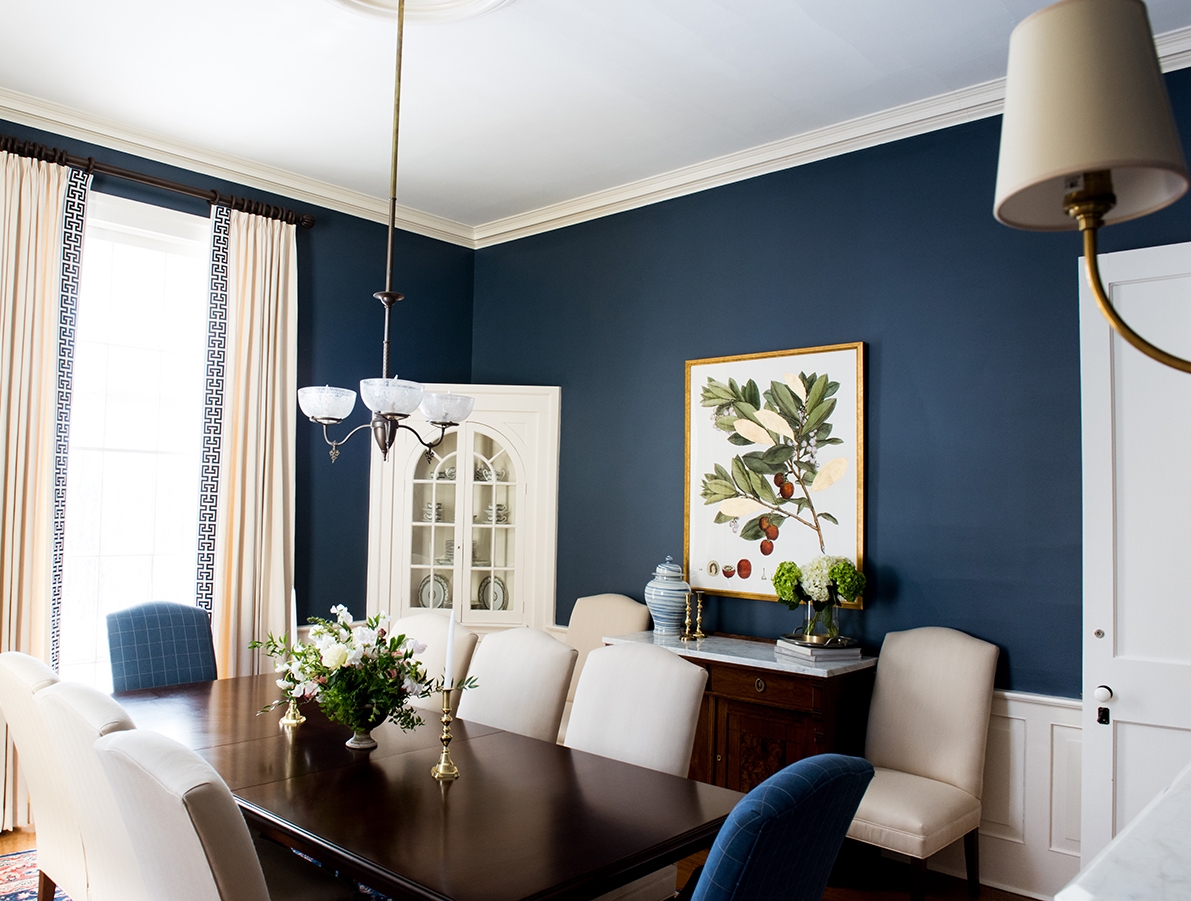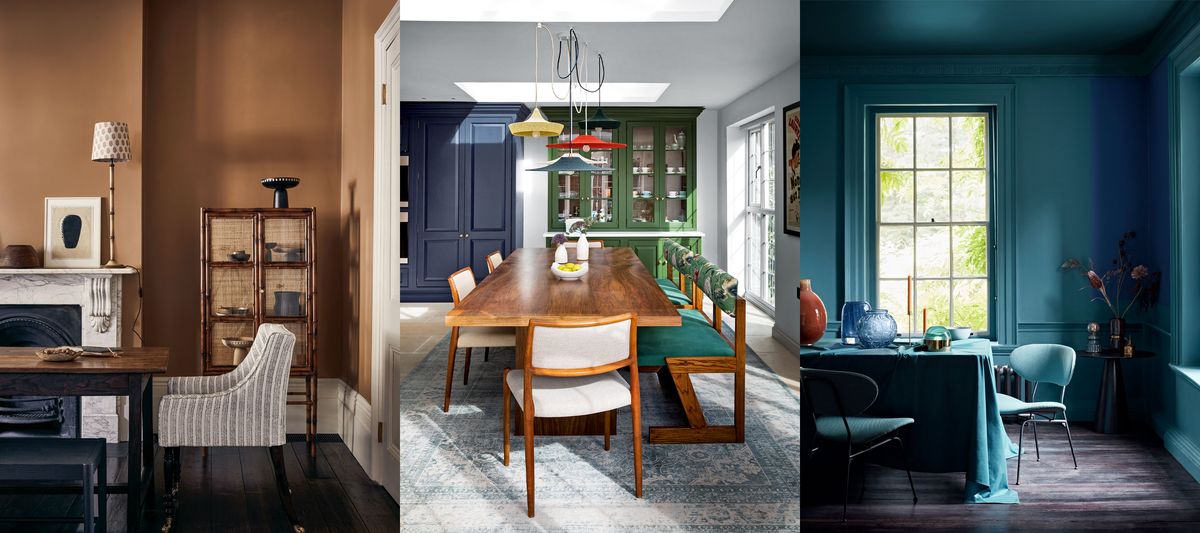Color schemes for your dining room
If you're looking to give your dining room a fresh new look, one of the easiest ways to do so is by changing up the color scheme. Color can have a huge impact on the overall atmosphere and mood of a room, making it important to choose the right colors for your dining room. Here are 10 main colors to consider for your dining room:
Best colors for dining room walls
The walls of your dining room are the perfect canvas to showcase your chosen color scheme. One of the best colors for dining room walls is blue. This color is known to have a calming effect, making it a great choice for a room where you gather to eat and relax. Other popular colors for dining room walls include gray for a modern and sophisticated look, and yellow for a cheerful and inviting atmosphere.
Popular dining room paint colors
When it comes to actually painting your dining room walls, there are a few colors that have stood the test of time and remain popular choices among homeowners. Beige is a classic and versatile color that pairs well with a variety of other colors and can create a warm and inviting feel in your dining room. Green is another popular choice, as it is associated with nature and can bring a sense of tranquility to the room.
Neutral colors for dining room
Neutral colors are a safe and timeless option for any dining room. White is a classic neutral that can make a room feel bright and spacious, while gray is a more modern and sophisticated neutral option. Another option to consider is beige, as mentioned earlier, which can add warmth and depth to your dining room.
Warm colors for dining room
For a cozy and inviting dining room, warm colors are the way to go. Red, orange, and yellow are all great options for creating a warm and inviting atmosphere. These colors can stimulate appetite and conversation, making them perfect for a dining room setting.
Cool colors for dining room
If you prefer a more calming and serene dining experience, consider using cool colors in your dining room. Blue, green, and purple are all great options for creating a peaceful and relaxing atmosphere. These colors can also make a small dining room feel more spacious and open.
Dark colors for dining room
While light colors are often preferred for dining rooms, don't be afraid to go dark for a dramatic and elegant look. Navy blue, emerald green, and burgundy are all bold colors that can add depth and sophistication to your dining room. Just be sure to balance out the dark colors with lighter accents and plenty of lighting to avoid making the room feel too heavy.
Light colors for dining room
On the other hand, if you have a small dining room or want to create a bright and airy atmosphere, light colors are the way to go. Pastel pink, soft yellow, and light green are all great options for adding a touch of color without overwhelming the space. Light colors can also make a room feel more spacious and open.
Bold colors for dining room
If you want to make a statement with your dining room, consider using bold colors that will grab attention and add personality to the space. Electric blue, hot pink, and bright orange are all bold colors that can create a fun and lively dining experience. Just be sure to balance out these colors with more neutral elements to avoid overwhelming the room.
Subtle colors for dining room
For a more subtle and understated dining room, choose colors that are toned down and muted. Light gray, pale blue, and soft green are all great options for creating a relaxed and calming atmosphere. These subtle colors can also make a room feel more sophisticated and elegant.
The Importance of Choosing the Right Colors for Your Dining Room

Creating the Perfect Atmosphere
 When it comes to designing your dining room, the color scheme is one of the most important elements to consider. The right colors can completely transform the atmosphere of the room, making it warm and inviting or cool and sophisticated.
Choosing a color palette that complements your personal style and the purpose of the room is crucial in creating a well-designed and functional space.
The dining room is where you gather with family and friends to share meals and create memories, so it's important to create a space that is both visually appealing and comfortable.
When it comes to designing your dining room, the color scheme is one of the most important elements to consider. The right colors can completely transform the atmosphere of the room, making it warm and inviting or cool and sophisticated.
Choosing a color palette that complements your personal style and the purpose of the room is crucial in creating a well-designed and functional space.
The dining room is where you gather with family and friends to share meals and create memories, so it's important to create a space that is both visually appealing and comfortable.
The Power of Color Psychology
 Color psychology is the study of how different colors can affect our emotions and behavior.
By understanding the psychological effects of colors, you can use them to your advantage in creating the perfect dining room atmosphere.
For example, warm colors like red and orange can stimulate appetite and conversation, making them great choices for a lively and social dining room. On the other hand, cool colors like blue and green can have a calming effect, making them ideal for a more relaxed and intimate dining experience.
Color psychology is the study of how different colors can affect our emotions and behavior.
By understanding the psychological effects of colors, you can use them to your advantage in creating the perfect dining room atmosphere.
For example, warm colors like red and orange can stimulate appetite and conversation, making them great choices for a lively and social dining room. On the other hand, cool colors like blue and green can have a calming effect, making them ideal for a more relaxed and intimate dining experience.
Harmonizing with the Rest of Your Home
 Another important factor to consider when choosing colors for your dining room is how they will harmonize with the rest of your home.
The dining room should flow seamlessly with the other rooms in your house, creating a cohesive and harmonious design.
Take into consideration the colors used in adjacent rooms and choose a color palette that complements them. This will create a sense of continuity and make your home feel more unified.
Another important factor to consider when choosing colors for your dining room is how they will harmonize with the rest of your home.
The dining room should flow seamlessly with the other rooms in your house, creating a cohesive and harmonious design.
Take into consideration the colors used in adjacent rooms and choose a color palette that complements them. This will create a sense of continuity and make your home feel more unified.
Adding Depth and Dimension
 In addition to the overall color scheme,
incorporating different shades and tones can add depth and dimension to your dining room.
For example, using a darker shade of your main color on an accent wall can create a focal point and add visual interest. You can also play with different textures and patterns in your color scheme to add depth and create a more dynamic space.
In addition to the overall color scheme,
incorporating different shades and tones can add depth and dimension to your dining room.
For example, using a darker shade of your main color on an accent wall can create a focal point and add visual interest. You can also play with different textures and patterns in your color scheme to add depth and create a more dynamic space.
Final Thoughts
 In conclusion, the colors you choose for your dining room can have a significant impact on the overall design and atmosphere of the space.
By considering the purpose of the room, utilizing color psychology, harmonizing with the rest of your home, and adding depth and dimension, you can create a dining room that is both aesthetically pleasing and functional.
Remember to choose colors that reflect your personal style and create a space that you and your loved ones will enjoy for years to come.
In conclusion, the colors you choose for your dining room can have a significant impact on the overall design and atmosphere of the space.
By considering the purpose of the room, utilizing color psychology, harmonizing with the rest of your home, and adding depth and dimension, you can create a dining room that is both aesthetically pleasing and functional.
Remember to choose colors that reflect your personal style and create a space that you and your loved ones will enjoy for years to come.
The Importance of Choosing the Right Colors for Your Dining Room

Creating the Perfect Atmosphere

When it comes to designing your dining room, the color scheme is one of the most important elements to consider. The right colors can completely transform the atmosphere of the room, making it warm and inviting or cool and sophisticated. Choosing a color palette that complements your personal style and the purpose of the room is crucial in creating a well-designed and functional space. The dining room is where you gather with family and friends to share meals and create memories, so it's important to create a space that is both visually appealing and comfortable.
The Power of Color Psychology

Color psychology is the study of how different colors can affect our emotions and behavior. By understanding the psychological effects of colors, you can use them to your advantage in creating the perfect dining room atmosphere. For example, warm colors like red and orange can stimulate appetite and conversation, making them great choices for a lively and social dining room. On the other hand, cool colors like blue and green can have a calming effect, making them ideal for a more relaxed and intimate dining experience.
Harmonizing with the Rest of Your Home
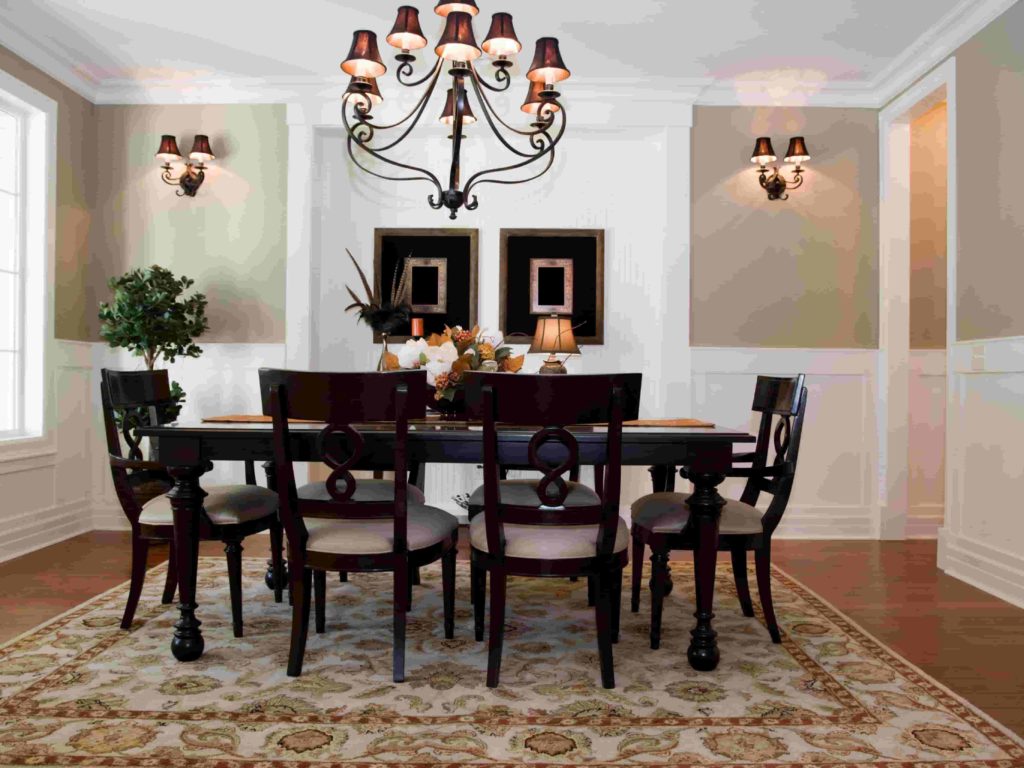
Another important factor to consider when choosing colors for your dining room is how they will harmonize with the rest of your home. The dining room should flow seamlessly with the other rooms in your house, creating a cohesive and harmonious design. Take into consideration the colors used in adjacent rooms and choose a color palette that complements them. This will create a sense of continuity and make your home feel more unified.
Adding Depth and Dimension
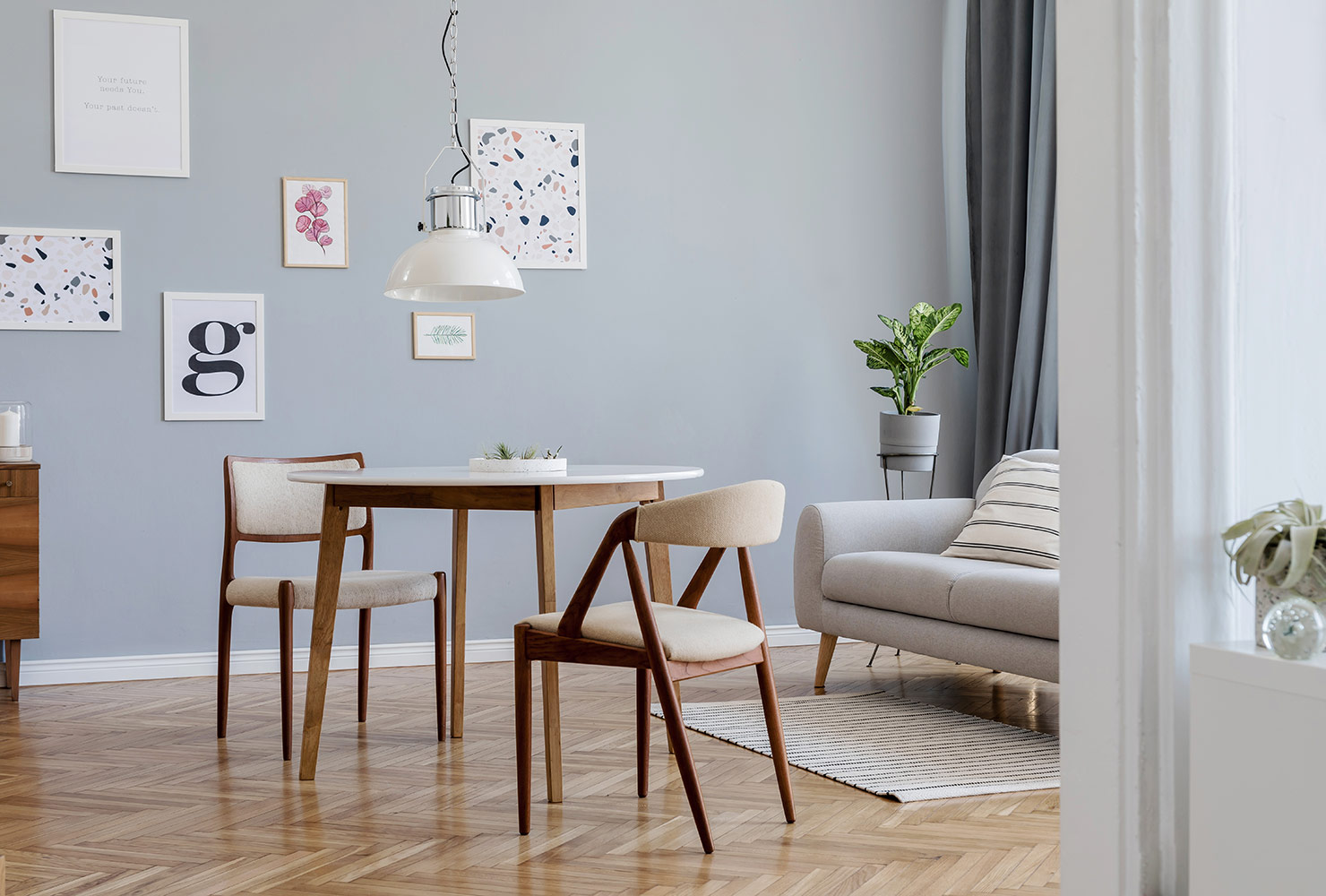
In addition to the overall color scheme, incorporating different shades and tones can add depth and dimension to your dining room. For example, using a darker shade of your main color on an accent wall can create a focal point and add visual interest. You can also play with different textures and patterns in your color scheme to






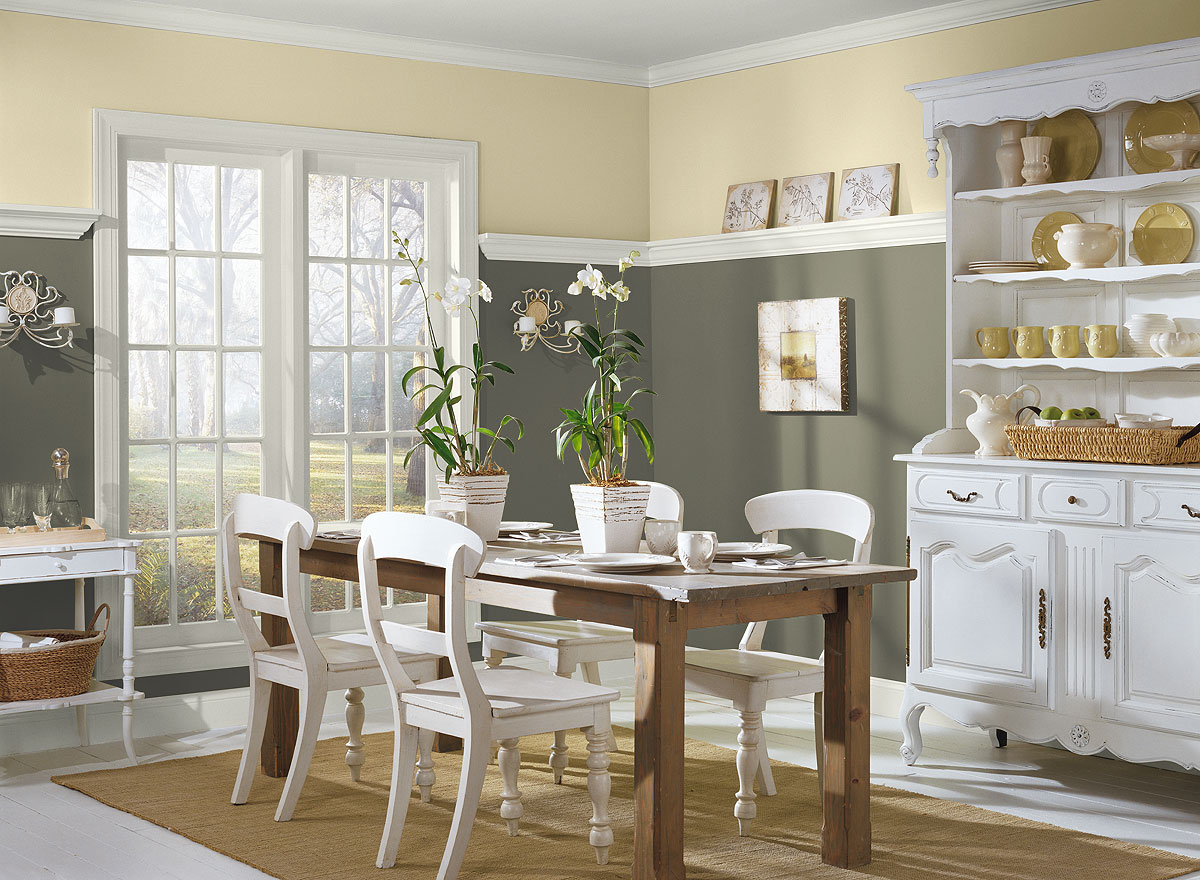






/GettyImages-872728164-5c79d40f46e0fb0001a5f030.jpg)
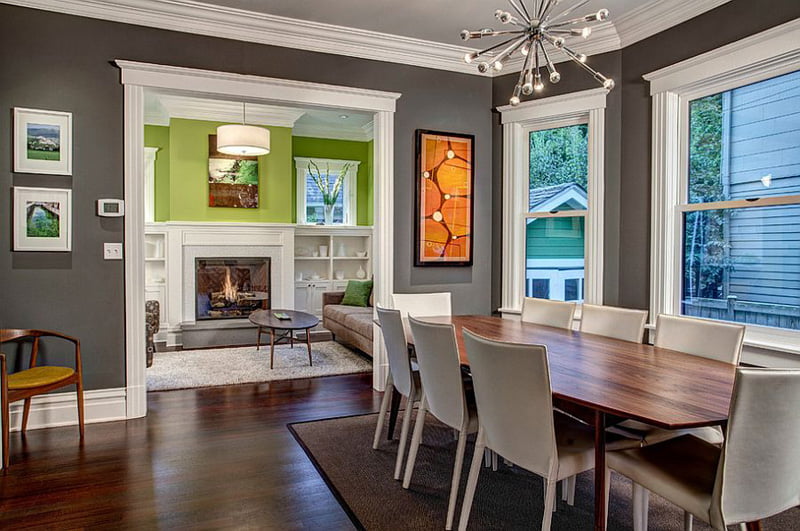


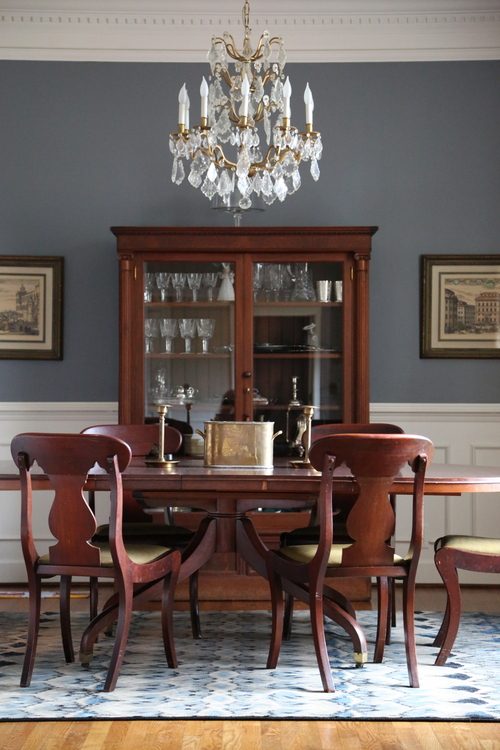
:max_bytes(150000):strip_icc()/DesignbyEmilyHendersonDesignPhotographerbyZekeRuelas_30-ad51133a857343228a2c56f76a22825f.jpg)


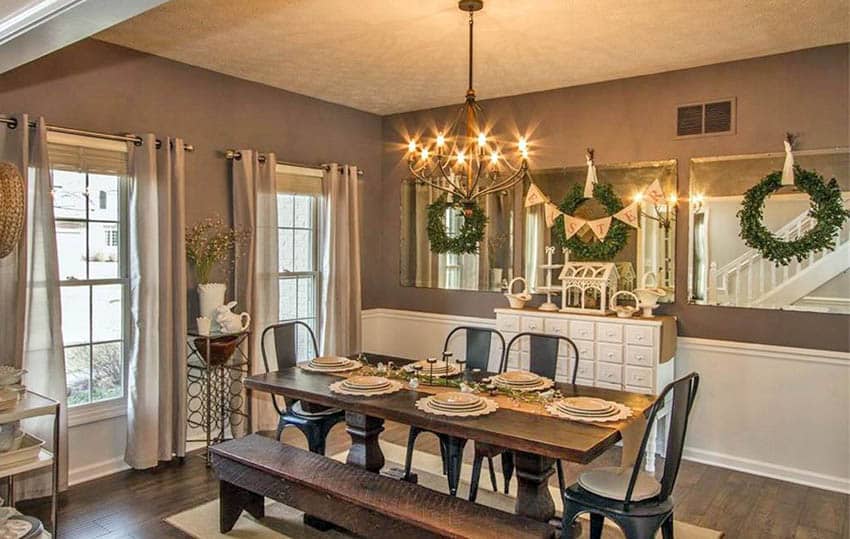



/dining-room-paint-colors-1822397-hero-18d1e598931c41d698f070a9f2d95022.jpg)






/MyDomaine_ColorPalette-Neutral-2-3590678b1c9143e28dd6b536f0a1e008.jpg)
